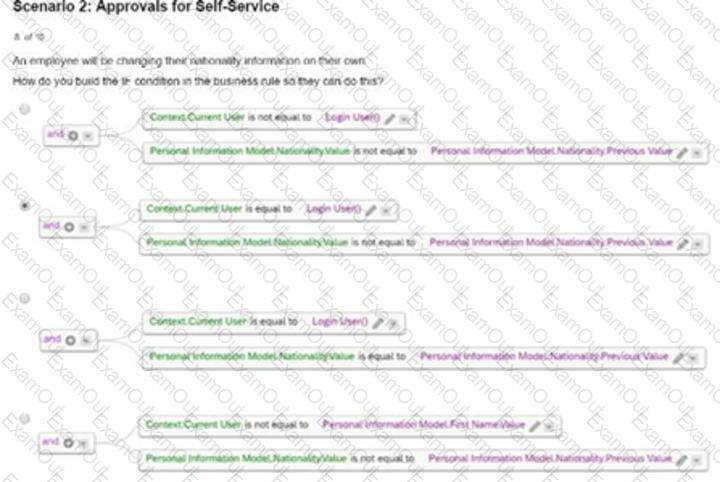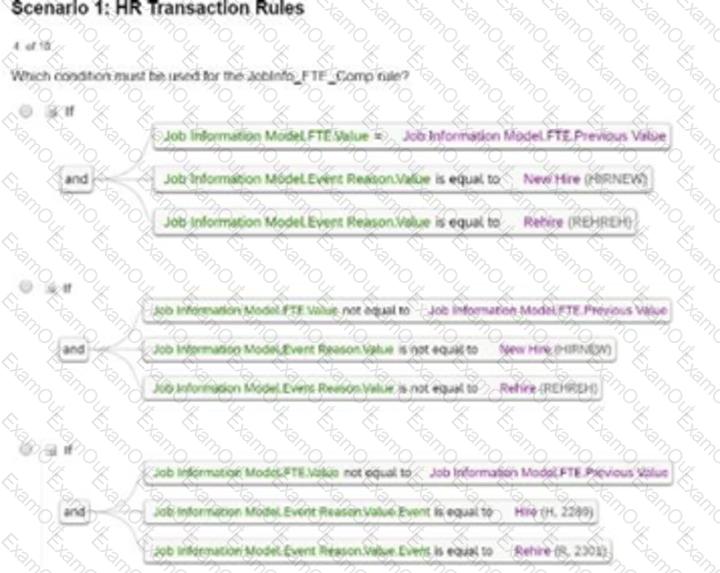How do you set the Event Reason Derivation rule to ensure event reasons are NOT overwritten?
In your project, the client asks for a mechanism by which a workflow can be approved by any one of a pool of people. What tool would you use to configure the group?
An employee will be changing their nationality information on their own
How do you build the IF condition in the business rule so they can do this?

A customer has scheduled an HRIS sync job, which includes mapping of job titles, to run every Friday. On Tuesday, an employee's job title is changed via Manager Self-Service (MSS) to become effective on Thursday.
When will the synchronization happen?
Due to confidentiality reasons, when the HR Business Partner (maintained in Job Relationship) is creating a change in salary for an employee, this action will need to be approved by the manager of the HR Business Partner creating the request.
How do you define this in the workflow when filling in the Approver Type, Approver Role, Context, and Relationship to Approver? Refer to the screenshot to answer the question

What must be done to ensure that you can use a custom generic (MDF) object for Employee Self- Service? Note: There are 2 correct answers to this question.
The employee is changing their marital status. Once the workflow is approved, themanager gets a notification via e-mail that this change has been processed. The manager then goes into the system and checks the workflow, but notices that they can see more fields than the ones for which they should receive a notification (Name, Marital Status, and Nationality)
Why is that?
Which condition must be used for the jobinfo_FTE_Comp rule?


To which Job information field will you assign the Default_JobClass rule?
Based on the screenshot below, can you identify any errors on the definition of the business rule to Default Position Attributes? Note: There are 2 correct answers to this question.

